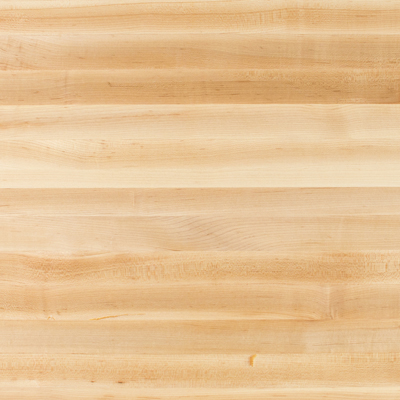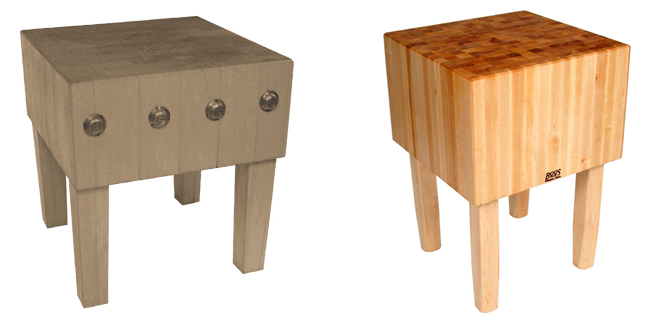Butcher Block is a specialized wood cutting surface, thick and rugged in design, built to sustain heavy blows from meat cleavers. The name "butcher's block" was originally derived from its use by commercial meat cutters in butcher shops and meat processing plants over 125 years ago. The first butcher blocks were made from Sycamore rounds, which were large sections of Sycamore tree trunks mounted on legs. However, inherent in this round cut of wood was the problem of the wood splitting, creating unsanitary conditions. This lead to the invention of the traditional end-grain butcher block, an assembled wood product made from strips of wood which are glued together to create a solid wedge.
Today, traditional butcher blocks can be found in millions of supermarkets, delis, restaurants and home kitchens around the world.

These end-grain boards are made by bonding together short pieces of wood standing side-by-side, creating the traditional "checkerboard" appearance. Their cut ends make an excellent surface for cutting and chopping. The wood fibers that make up the cutting surface are less susceptible to nicks and gouges, and will absorb the impact of knives.

These days, the term butcher block is commonly used to refer to edge-grain constructed blocks as well. Edge-grain blocks are made from laminating wood rails side-by-side, with the edges of wood strips making up the surface of the butcher block. Many butcher blocks for home use are edge-grain construction because they are perfectly suitable for home use and are more affordable.
Edge-grain butcher blocks typically are thinner, lighter and more portable, making them ideal for versatile tables, hard-working carts, gorgeous countertops, and functional cutting boards. What is your favorite butcher block product?
Want to learn more? Watch our YouTube Video - An Introduction to Butcher Block

